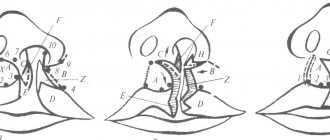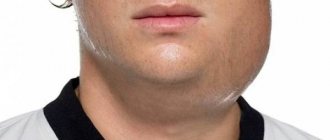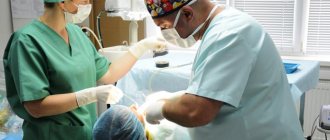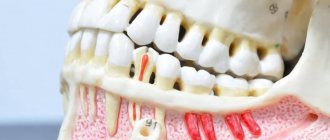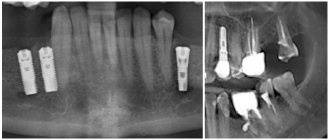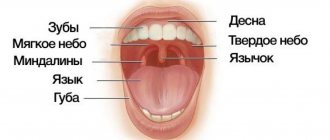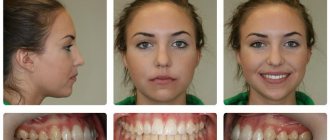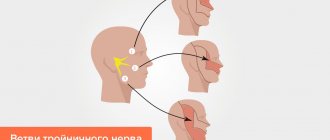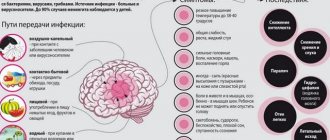Reconstructive surgery is a special branch of plastic surgery, the task of which is to restore damaged structures and organs.
The face is one of the most vulnerable and injury-prone areas. A large number of road traffic accidents, military operations and terrorist attacks, as well as sports and domestic injuries lead to an increase in the number of people who have received severe injuries to the facial skeleton.
The face consists of a large number of thin bone plates, which makes the diagnosis and treatment of post-traumatic injuries of the facial skeleton very difficult.
Injuries to the facial bones lead to functional impairments such as
- Changing the location of the eyeball
- Nasal breathing disorder
- Malocclusion
In addition to functional disorders, social adaptation disorders and severe mental disorders due to worries about lost attractiveness often occur.
Benefits of facial skeletal restoration at ART-Clinic
Online consultations for patients from the regions
A team of highly qualified specialists with extensive experience
Modern minimally invasive techniques of operations and reconstructions
Affordable prices, promotions, discounts, installments
Reconstructive surgery is a priority area of activity for ART-Clinic. A team of highly qualified plastic surgeons led by Professor A.I. Nerobeev is ready to help people in trouble.
Doctor of Medical Sciences, Professor A.I. Nerobeev is one of the most famous maxillofacial surgeons in Russia, his main specialization is reconstructive surgery
The combination of advanced technologies, modern equipment and the highest professionalism of surgeons is a reliable basis for achieving good results from operations to restore the facial skeleton.
Make an appointment with Professor Nerobeev by phone and 8 800 500 42 32 (calls within Russia are free) or using a special form.
After mandibular osteotomy surgery
For 1-3 days after surgery, it is recommended to stay in the hospital under the supervision of medical personnel (the duration of hospital stay can be extended to 10 days depending on the course of the postoperative period). The duration of the rehabilitation period depends on the body's recovery abilities.
In the postoperative period, it is possible to wear an orthodontic brace system for the correct closure of the dentition of the upper and lower jaws.
Result
The final result of the operation can be observed after 3-6 months.
In the postoperative period, swelling may persist for 2-4 weeks, depending on individual characteristics, recovery proceeds at different speeds. [/td]
Read more about facial skeletal reconstruction
Restoration of the facial skeleton and elimination of post-traumatic deformations of appearance is a very complex set of diagnostic, surgical and rehabilitation procedures.
Preoperative planning
Preoperative planning is one of the most important components of the success of the operation and includes several stages:
- photographing;
- computed tomography, which gives a visual image of the state of the facial bone skeleton, which allows the doctor to plan the necessary actions and calculate the required volume of grafts;
- if necessary, production of plastic bone models based on 3D computed tomography data.
Features of the operation
The use of modern methods of reconstructive surgery makes it possible to restore the facial skeleton simultaneously with the reconstruction of damaged soft tissues.
The access points through which surgery is performed may be in the scalp, inside the mouth, or under the ciliated edge of the lower eyelid, that is, in places where they will not be noticeable after surgery.
What grafts are used?
To restore the facial skeleton, grafts made of titanium, graphite, and plastics are used. The most stable result is provided by the use of autografts, i.e. tissues taken from the patient himself.
As world experience in the field of reconstructive operations of the facial skeleton shows, the use of autografts gives the most stable and predictable result. Autografts are not subject to resorption or suppuration; they are able to integrate with surrounding tissues, which distinguishes them favorably from artificial materials.
Using special microsurgical techniques, it is possible to transplant areas of bone and soft tissue along with nerves and feeding vessels. Such grafts help recreate large volumes of bone and soft tissue.
Modern methods of reconstruction of the facial skeleton using progressive transplantation techniques provide good functional and aesthetic results.
Is plastic surgery used to reconstruct the facial skeleton?
A circular facelift performed after the main operation helps to achieve perfection. This method is practically harmless; it helps eliminate sagging soft tissues of the face, remove sagging skin and restore self-confidence.
Prices for facial skeleton restoration
| Autotransplantation of neurotized muscle using microsurgical technique | 450 000₽ |
| Autotransplantation of a flap with bone inclusion | 600 000₽ |
| Autotransplantation of a revascularized soft tissue flap | 400 000₽ |
| The second stage of nose formation | 90 000₽ |
| Isolation of branches of the inferior alveolar nerve when they are pinched | 160 000₽ |
| Avascular iliac crest autograft harvesting | 60 000₽ |
| Collection of split bone autograft from the cranial vault | 60 000₽ |
| Rib autograft collection | 60 000₽ |
| Closing the palate defect with two flaps from the vestibule of the oral cavity | 140 000₽ |
| Closure of the anterior palate defect with a palatal flap | 150 000₽ |
| Replacement of a defect in the lower and middle zone of the face with a flap on a vascular pedicle | 200 000₽ |
| Excision of paraauricular fistula | 50 000₽ |
| Excision of scars in the eyelid area | 50 000₽ |
| Excision of scars up to 5cm | 35 000₽ |
| Excision of keloid scars from 5 to 10 cm | 90 000₽ |
| Excision of soft tissue fistula | 80 000₽ |
| Mouth angle correction | 60 000₽ |
| Marginal resection of the body of the lower jaw within the alveolar process up to 2 cm | 70 000₽ |
| Marginal resection of the body of the lower jaw within the alveolar process up to 5 cm | 90 000₽ |
| Flap surgery in the oral cavity | 60 000₽ |
| Osteosynthesis (high) of the condylar process of the mandible | 120 000₽ |
| Osteosynthesis of the lower jaw with metal structures (multiple) | 90 000₽ |
| Osteosynthesis of the lower jaw with metal structures (single) | 60 000₽ |
| Osteosynthesis of the zygomatic bone at three points of fixation | 145 000₽ |
| Simultaneous radical parotidectomy with restoration of the branches of the facial nerve using microsurgical techniques | 300 000₽ |
| Ligation of the branches of the great vessels | 90 000₽ |
| Transfer of the deltopectoral flap | 190 000₽ |
| Moving the skin flap to close the wound using the dermatotension method (stage 2) | 120 000₽ |
| Transfer of axial flaps from distant areas | 160 000₽ |
| Transfer of axial flaps from adjacent areas | 80 000₽ |
| Movement of a rotational or sliding single flap | 80 000₽ |
| Movement of rotational or sliding multiple flaps | 160 000₽ |
| Relocation of a free skin autograft | 55 000₽ |
| Relocation of own subcutaneous fat tissue (1 zone) | 50 000₽ |
| Moving triangular flaps over 5cm | 55 000₽ |
| Moving the corner of the eye with correction of the upper and lower eyelids | 90 000₽ |
| Suspending the soft tissues of the face with sutures and threads | 120 000₽ |
| Extended biopsy | 50 000₽ |
| Revision of the lower orbital margin | 80 000₽ |
| Revision of the lower jaw, sequestrectomy with immediate elimination of the defect | 140 000₽ |
| Resection of the upper jaw | 180 000₽ |
| Resection of the submandibular salivary gland | 80 000₽ |
| Reconstruction of the supraorbital rim using split autologous bone from the calvarium | 135 000₽ |
| Reconstruction of the cranio-orbital-facial complex | 275 000₽ |
| Reconstruction of the language | 140 000₽ |
| Reposition and fixation of the zygomatic bone | 100 000₽ |
| Closed reposition of the zygomatic bone or arch without the use of metal structures | 40 000₽ |
| Transposition of the temporalis muscle | 170 000₽ |
| Neuromuscular flap transposition | 250 000₽ |
| Removal of implant, graft | 50 000₽ |
| Removal of foreign body bone from extramedullary metal structures | 60 000₽ |
| Removal of a foreign body with dissection of soft tissues | 60 000₽ |
| Removal of subcutaneous formation with a diameter of up to 5 cm | 35 000₽ |
| Removal of rhinophyma | 65 000₽ |
| Installation of tissue expanders without the cost of expanders (1st stage of dermatension) | 120 000₽ |
| Elimination of blepharoptosis (one eyelid) | 55 000₽ |
| Correction of bilateral upper lip deformity | 125 000₽ |
| Elimination of bilateral microstomy | 110 000₽ |
| Elimination of a scalp defect using two or more rotational flaps | 150 000₽ |
| Elimination of a scalp defect with one rotational flap with removal of a scalp tumor | 180 000₽ |
| Elimination of a defect in the orbital floor with reposition of the eyeball | 150 000₽ |
| Elimination of the defect with a visor-shaped flap | 175 000₽ |
| Elimination of skull bone defects | 130 000₽ |
| Elimination of a nasal wing defect using a cheek flap (stage 2) | 100 000₽ |
| Elimination of a nasal defect using cheek flaps (stage 1) | 165 000₽ |
| Elimination of a nasal defect using a forehead flap (stage 1) | 150 000₽ |
| Elimination of nasal defect using Converse (stage 1) | 180 000₽ |
| Elimination of the defect with movement of tissue complexes (skin, muscles, tendons) | 220 000₽ |
| Elimination of a defect in the cartilage of the nose using autocartilage | 135 000₽ |
| Elimination of eyebrow deformation using a closed method using threads | 40 000₽ |
| Correction of eyebrow deformity with a free skin graft | 50 000₽ |
| Elimination of eyelid deformation with local tissues | 110 000₽ |
| Correction of eyelid deformity with a free skin graft | 70 000₽ |
| Correction of upper or lower lip deformities | 65 000₽ |
| Elimination of deformation of the canthal ligaments | 60 000₽ |
| Elimination of deformity with a musculocutaneous flap including the sternocleidomastoid muscle | 90 000₽ |
| Elimination of deformation of the red border of the upper or lower lip (complete) | 110 000₽ |
| Elimination of deformation of the red border of the upper or lower lip (partial) | 55 000₽ |
| Elimination of deformity using a pedicle flap (stage 2 – cutting off the feeding pedicle) | 50 000₽ |
| Elimination of lower eyelid deformity | 65 000₽ |
| Elimination of lower eyelid deformity using a flap from the upper eyelid | 120 000₽ |
| Elimination of deformation of the lower jaw: mental region + body of the lower jaw + angle of the lower jaw | 150 000₽ |
| Elimination of deformation with a silicone implant in one area (without the cost of the implant) | 130 000₽ |
| Elimination of deformation with a silicone implant, titanium mesh, autologous bone of the fronto-naso-orbital region | 200 000₽ |
| Elimination of deformation with a silicone implant, titanium mesh, autologous bone of the zygomaticoinfraorbital buccal region | 150 000₽ |
| Elimination of deformation of the cheek area | 120 000₽ |
| Elimination of bone defects in the maxillofacial area using autologous bone grafts and/or artificial implants | 170 000₽ |
| Elimination of unilateral microstomy | 75 000₽ |
| Elimination of superficial scar deformation of the perioral area | 60 000₽ |
| Elimination of through scar deformation of the perioral area | 90 000₽ |
| Elimination of partial defect of the auricle | 115 000₽ |
| Elimination of epicanthus | 50 000₽ |
| Cystotomy of extensive cystic formations up to 4 cm | 60 000₽ |
| Cystotomy of extensive cystic formations up to 8 cm | 90 000₽ |
| Partial resection of the lower jaw with immediate elimination of the defect and fixation of the soft tissues of the floor of the mouth | 230 000₽ |
| Extirpation of median cysts and fistulas of the neck | 125 000₽ |
View full price list
Rehabilitation after maxillofacial surgery
Table of contents
- When operations are required
- Indications for operations
- Preparing for surgery
- Contraindications
- Features of rehabilitation after maxillofacial surgery
- Advantages of rehabilitation at MEDSI
Maxillofacial surgery is a field
dedicated to the treatment of inflammatory diseases of the hard and soft tissues of the face and neck, elimination of the consequences of injuries, removal of malignant tumors, acquired and congenital defects of the jaws, head, oral cavity and other areas. Rehabilitation in this area is often no less important than the therapy itself. It is recovery that provides all the conditions for a person’s full return to active social life: work, hobbies, communication with friends, etc.
At this stage, not only surgeons, but also other specialists can get involved in the work: dental therapists, orthodontists, psychologists, etc. Rehabilitation of patients in maxillofacial
surgery is carried out exclusively by experienced doctors
who have all the necessary knowledge and skills and develop individual programs for each person.
When operations are required
Maxillofacial surgery is a broad field in which operations are relevant for a large list of pathological conditions and diseases. Today, modern techniques are used to reduce the duration of the recovery period and reduce the risks of side effects and complications.
The main situations requiring intervention include:
- Inflammatory processes in the maxillofacial area. Doctors treat radionecrosis of the jaws, osteomyelitis, rhinophyma, opening phlegmons and abscesses, carbuncles and boils, sinusotomy, etc.
- Traumatic injuries. Surgeons perform osteosynthesis of bones for fractures, plastic surgery of the condylar process, etc.
- Congenital anomalies. Doctors eliminate deformities of the maxillofacial area, congenital jaw defects, remove cysts and fistulas of the neck, treat joint pathologies, perform plastic surgery for congenital cleft lip, etc.
- Neuritis and neuralgia
- Benign formations: salivary gland cysts, tumors (hemangiomas, lymphangiomas, etc.)
Also, maxillofacial surgery is aimed at reconstructing various areas: the orbit, the zygomatico-orbital complex, etc. Doctors perform soft tissue plastic surgery, osteoplasty, free tissue transplantation, correction of lacrimal drainage disorders, removal of excess skin, rhinoplasty, formation of eyelid folds, endo- and ectoprosthetics, etc. .
Indications for operations
The main indications for interventions are:
- Congenital deformities: underdeveloped or very developed jaw and malocclusion
- Fractures of the zygomatic bones, eye socket, jaws and nasal bones
- Diseases of the oral cavity: inflammatory processes in the glands and joints, difficult teething, phlegmon, etc.
- Elimination of consequences after syphilis, cancer and other diseases
- Congenital soft tissue defects: cleft lips, palate, etc.
- Age-related deformations on the skin, lips, neck, etc.
- Inflammatory processes after incorrect injections and other procedures
- Tumors and tumor-like formations
Also, operations in maxillofacial surgery can be carried out according to the wishes of the patient, due to dissatisfaction with his own appearance.
Preparing for surgery
Preparation for any intervention includes:
- Inspection.
The doctor examines the existing pathologies in detail - Consultation with the operating surgeon.
It details the nature of the upcoming operation, its duration, methods used and results. The doctor must take into account all the patient’s wishes regarding the nature of the intervention. The patient is introduced to possible complications and side effects - Comprehensive examination.
It includes urine and blood tests, chest X-ray and ECG. Electroencephalography, rhinopneumometry and other examinations may also be performed. Comprehensive diagnostics allows you to determine the general health of the patient and identify contraindications to intervention (if any) - Taking photographs.
If necessary, videographic analysis of appearance, facial anthropometry and other manipulations are also carried out - Consultations with doctors of narrow specializations.
If necessary, otolaryngologists and other specialists are involved in the work - Consultation with an anesthesiologist.
At the appointment, the doctor selects the optimal anesthesia option. Operations can be performed both under local anesthesia and general anesthesia. The method of anesthesia is determined in accordance with the current condition of the patient, the extent of the intervention and other factors
Contraindications
General contraindications include:
- chronic and acute infectious diseases
- serious mental disorders
- severe disorders of the gastrointestinal tract
- pustular lesions in the area of intervention
- elevated body temperature
- general poor health
- menstruation
- pregnancy
There are also local contraindications. The operation should be abandoned if the degree of deformation is insignificant and there is no functional impairment, when the aesthetic factor is not of fundamental importance (for example, in the elderly). Intervention should be postponed in case of inflammatory processes in the affected area. Also contraindicated are inflammations in the jaws, nasal cavity, and nearby lymph nodes.
Features of rehabilitation after maxillofacial surgery
Recovery often plays a decisive role in the success of all processes and the degree of satisfaction of both the patient and the surgeon. At the same time, it is associated with a number of difficulties caused by the restoration of not only the functions of various parts of the body, but also their aesthetics. Often, medical rehabilitation in surgery is carried out with mandatory psychological support.
Recovery features also include:
- The need for joint work of doctors of various profiles. Restorative measures can be carried out by dentists (orthopedists and orthodontists), ENT specialists, neurologists, etc.
- Integrated and individual approach. The rehabilitation program for patients in surgery is often developed and prepared in advance and includes a whole range of different activities. These include: drug support, physiotherapy, work with a psychologist, etc.
- The need to restore the ability to breathe, swallow, chew, speak, etc.
- The need to eliminate traces of interventions. Cosmetic defects can have a serious impact on a person's quality of life. For this reason, special attention is paid to the elimination of scars. When performing operations on the maxillofacial area, surgeons select modern technologies in advance that leave virtually no traces
Important! A competent approach to rehabilitation in maxillofacial surgery, planning of all activities, close cooperation of doctors of related specialties can ensure a favorable prognosis and high quality of life for the patient after the intervention. It is also very important that the patient himself is ready to follow all the recommendations of specialists and strictly follow the instructions given by them during the recovery period.
Advantages of rehabilitation at MEDSI
- Newest technologies.
In our clinics, operations are performed using modern techniques, which allows us to shorten the rehabilitation period even after serious interventions. Rehabilitation treatment is also carried out using the latest technologies: physiotherapy, massage, etc. - Doctors of international level.
Our specialists are constantly studying new technologies and improving their skills. Doctors are fluent in well-known rehabilitation techniques that allow for rapid recovery, and also develop their own programs - Team approach and comprehensive programs.
One patient is observed by several doctors at once. This allows us to guarantee effective support even with concomitant diseases and disorders. If necessary, consultations are held - Opportunities for recovery at any stage.
All necessary manipulations can begin already in intensive care conditions - Recovery in a hospital, outpatient, remotely at home.
We also use SMART telerehabilitation technologies. Remote recovery may include classes with a speech therapist, psychologist, psychotherapist and other specialists and is provided on a convenient schedule with constant support - Opportunities to work with children.
We offer programs that are designed for even the youngest patients
If you are interested in rehabilitation in maxillofacial surgery in Moscow, call +7 (495) 7-800-500. The specialist will tell you about its features and answer all questions.

